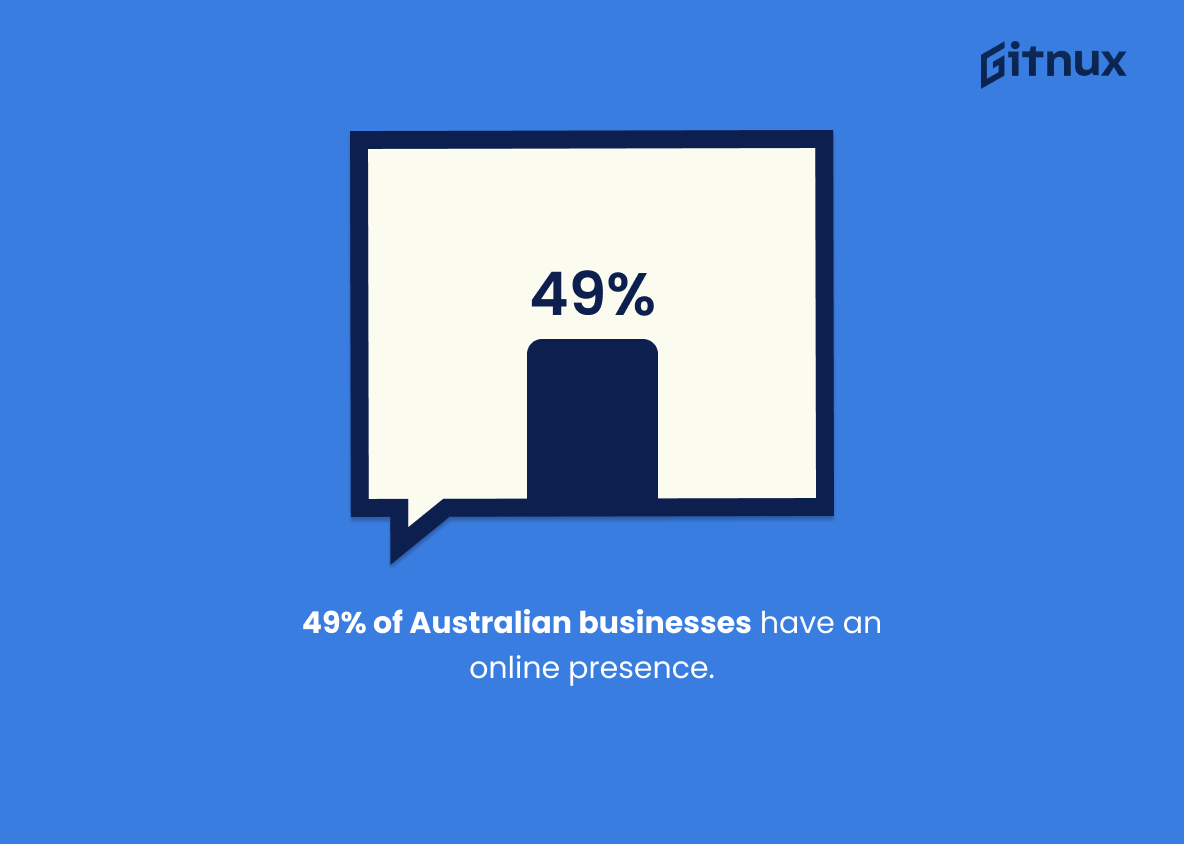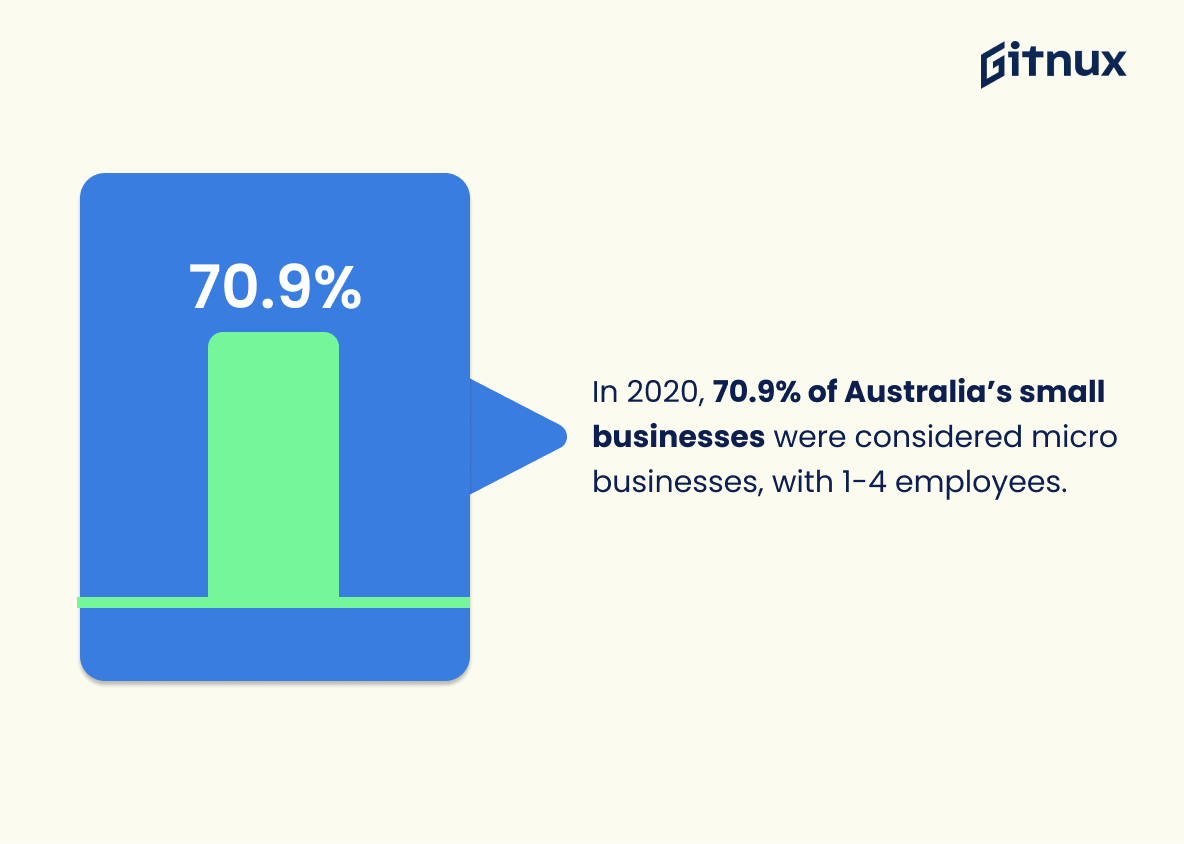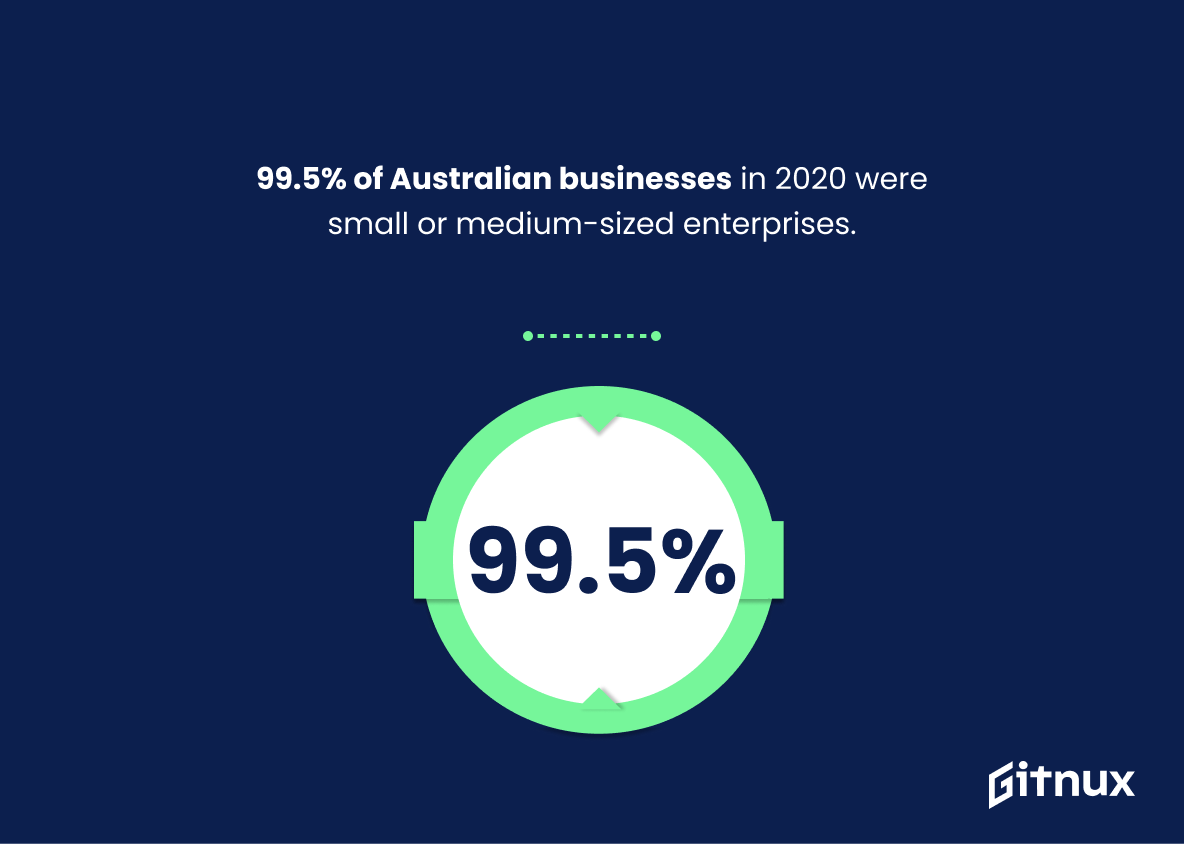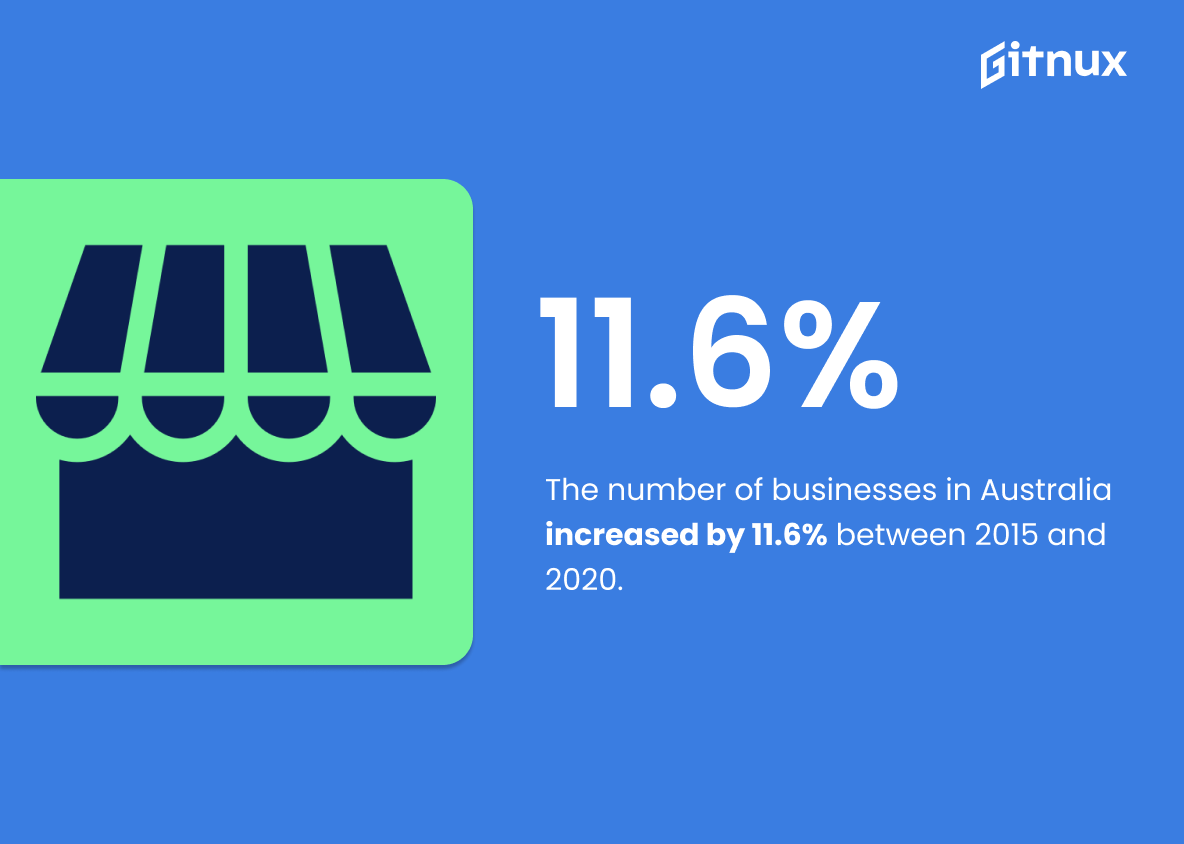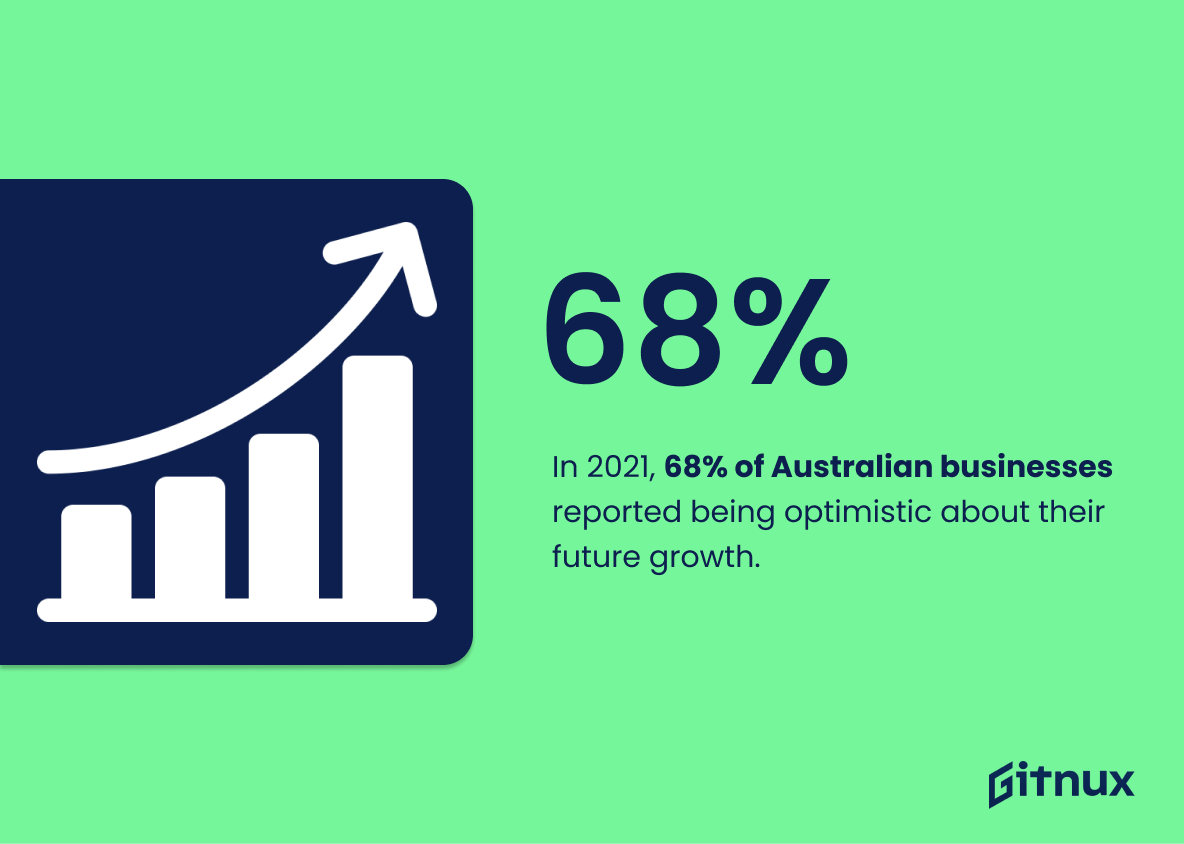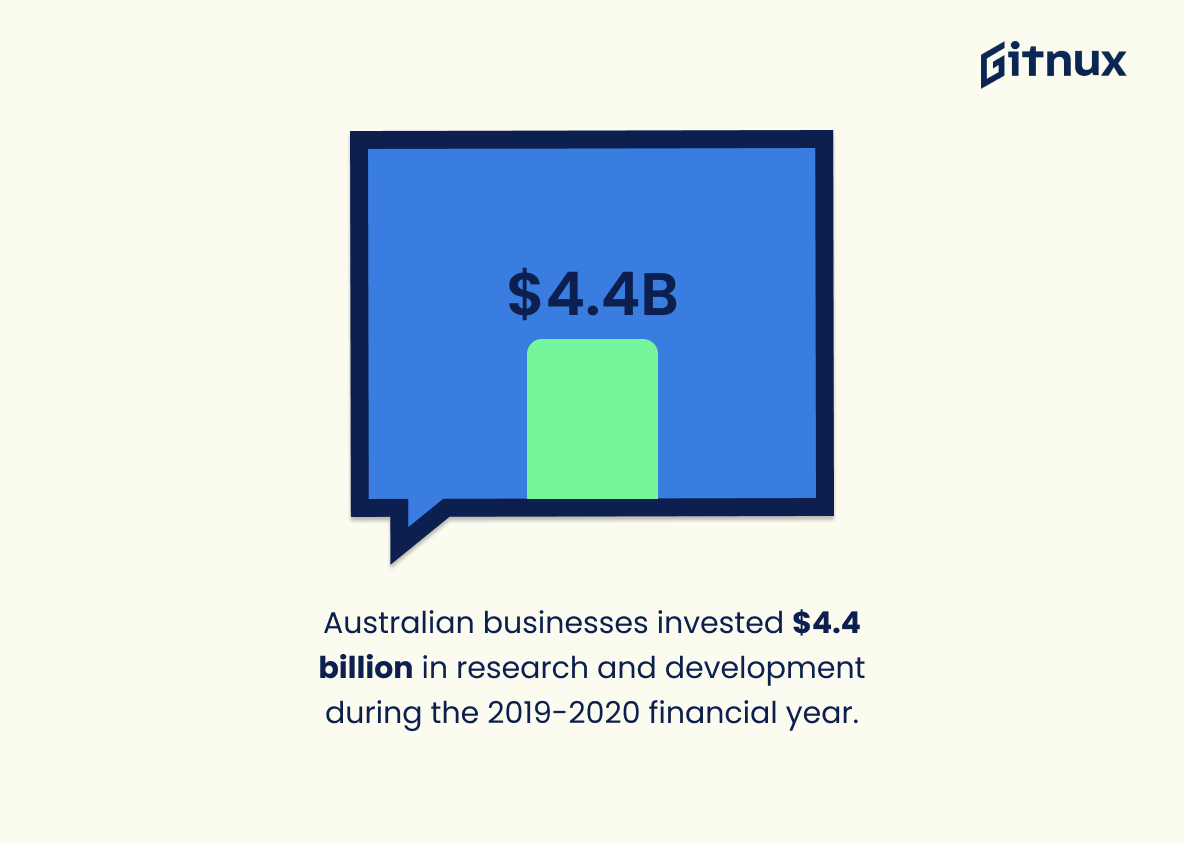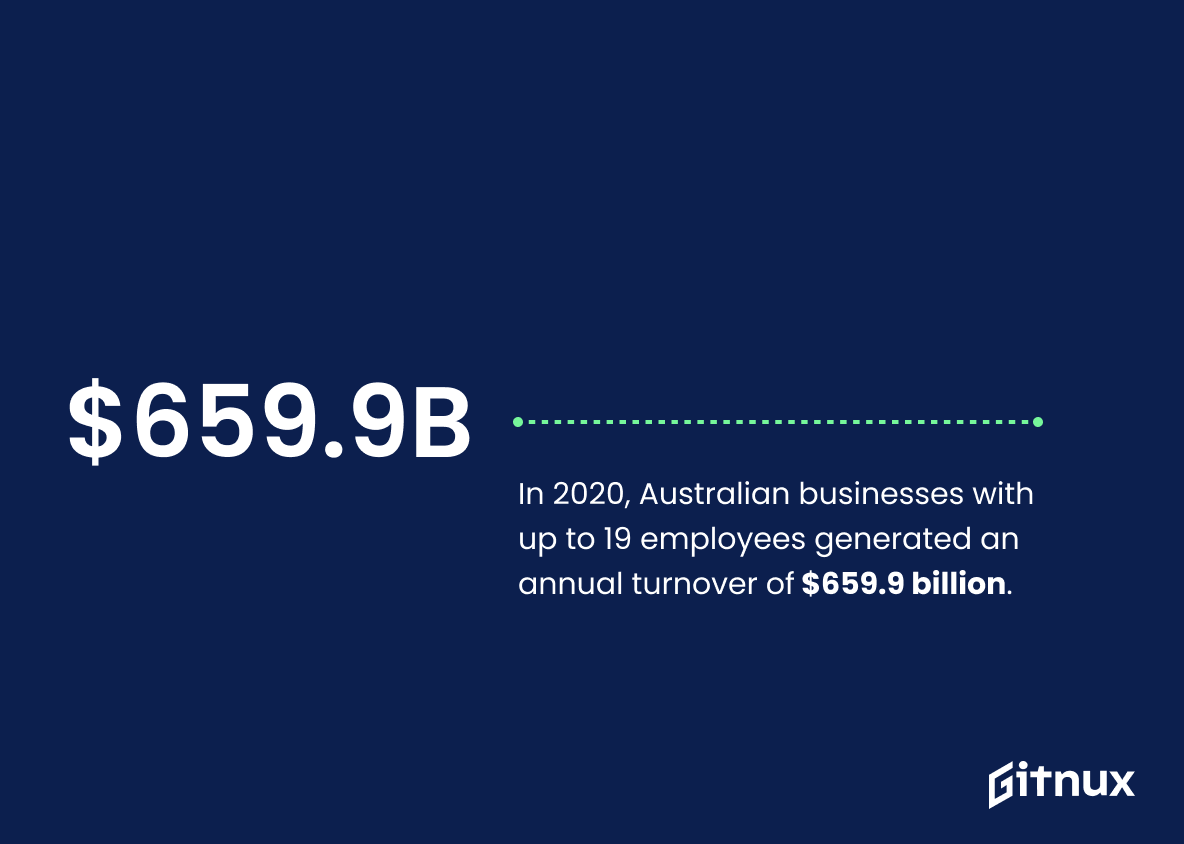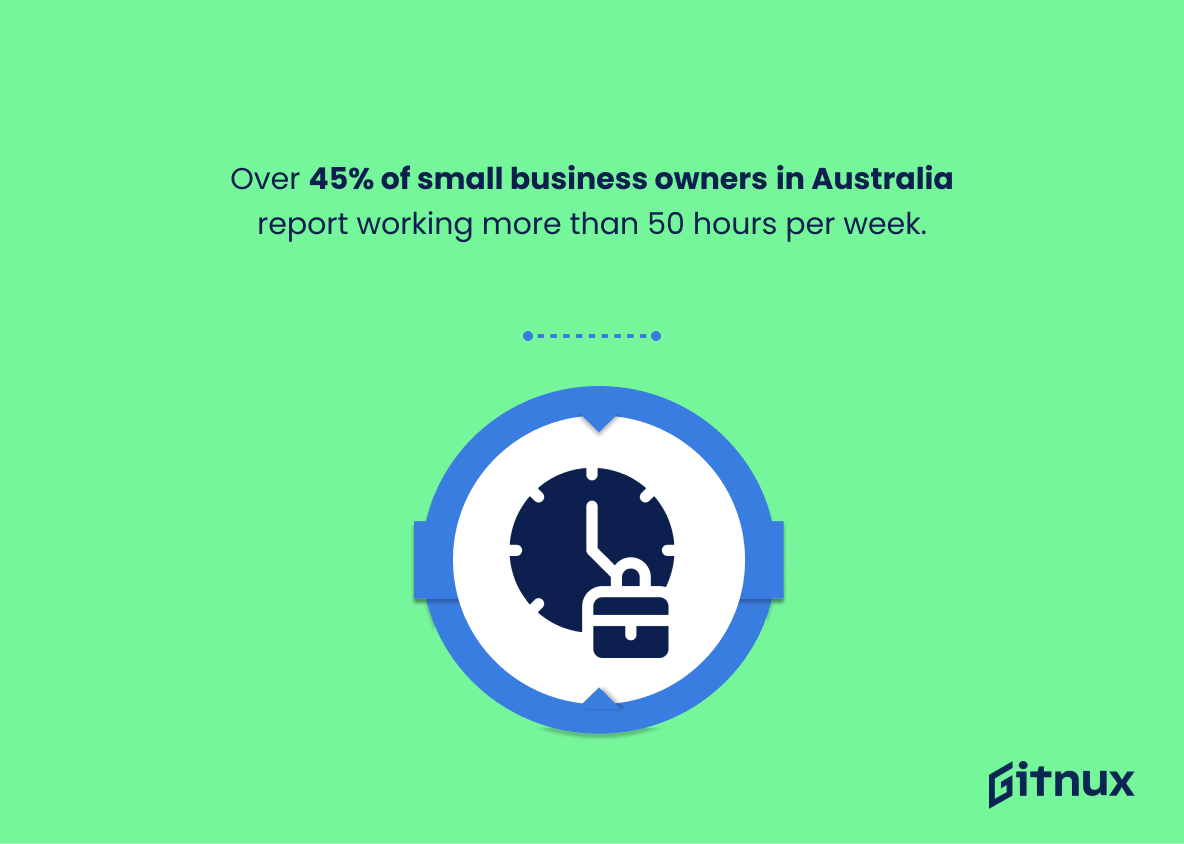The Australian business sector is an important part of the country’s economy, and understanding its current state can help inform decisions about how to best support it. This blog post will explore some key statistics related to small businesses in Australia, including their number, employees, ownership structure, contribution to GDP growth and more. We’ll also look at trends such as online presence and financial assistance uptake during the COVID-19 pandemic. Finally we’ll examine international rankings for ease of doing business in Australia compared with other countries around the world.
This statistic is a testament to the sheer number of small businesses that are operating in Australia. It highlights the importance of small businesses to the Australian economy and the impact they have on the country’s overall economic health. It also serves as a reminder of the hard work and dedication of the entrepreneurs and business owners who have taken the risk to start their own businesses.
In June 2019, Australian businesses employed approximately 11.9 million people.
This statistic is a powerful indicator of the strength of the Australian business sector. It shows that despite the challenges of the global economy, businesses in Australia are still able to employ a large number of people. This is a testament to the resilience of the Australian business sector and its ability to adapt to changing economic conditions.
Australian Business Statistics Overview
Female business owners comprised 35% of all self-employed entrepreneurs in Australia in 2020.
This statistic is a powerful indicator of the progress being made in Australia towards gender equality in the business world. It shows that female business owners are increasingly taking the lead in the entrepreneurial space, and that the country is becoming more inclusive of women in the business sector. This is an important step forward for Australia, and it is encouraging to see that the number of female business owners is growing. This statistic is a testament to the hard work and dedication of female entrepreneurs in Australia, and it is a reminder that there is still much work to be done in order to achieve true gender equality in the business world.
49% of Australian businesses have an online presence.
This statistic is indicative of the fact that the majority of Australian businesses are embracing the digital age and recognizing the importance of having an online presence. It speaks to the fact that businesses are recognizing the potential of the internet to reach a wider audience and increase their customer base. This is an important statistic to consider when discussing the current state of Australian businesses, as it shows that they are adapting to the changing landscape of the business world.
42% of Australian small businesses fail due to inadequate cash flow.
This statistic is a stark reminder of the importance of cash flow for small businesses in Australia. It highlights the need for entrepreneurs to be aware of the financial risks associated with running a business and to take steps to ensure their cash flow is managed effectively. This is especially pertinent in the current economic climate, where the pandemic has caused disruption to many businesses. By understanding the risks associated with inadequate cash flow, small business owners can take steps to protect their business and ensure its long-term success.
In 2020, 70.9% of Australia’s small businesses were considered micro businesses, with 1-4 employees.
This statistic is a telling indication of the prevalence of micro businesses in Australia. It highlights the importance of small businesses in the Australian economy, with the majority of businesses having only a few employees. This statistic is a reminder of the importance of supporting small businesses in Australia, as they are a major contributor to the economy.
99.5% of Australian businesses in 2020 were small or medium-sized enterprises.
This statistic is a testament to the resilience of Australian businesses in 2020, despite the challenges posed by the global pandemic. It highlights the importance of small and medium-sized enterprises in the Australian economy, and how they have been able to weather the storm and remain a vital part of the country’s economic landscape. This statistic is a reminder of the importance of supporting small and medium-sized businesses, and the need to ensure that they are given the resources and support they need to continue to thrive in the future.
The number of businesses in Australia increased by 11.6% between 2015 and 2020.
This statistic is a testament to the resilience of Australian businesses, having grown by 11.6% in the face of the numerous challenges posed by the past five years. It is a sign of the strength of the Australian economy and a reminder of the importance of businesses in driving the nation’s growth. This statistic is a key indicator of the health of the Australian business landscape and provides valuable insight into the current state of the economy.
In 2021, 17.8% of Australian businesses were in the construction industry.
This statistic is a telling indication of the importance of the construction industry in Australia. It highlights the fact that a significant portion of the country’s businesses are involved in the construction sector, which is a major contributor to the nation’s economy. Furthermore, it provides insight into the current state of the industry and the potential for growth in the future.
In 2020, Australia ranked 14th in ease of doing business by the World Bank.
This statistic is a testament to the success of Australia’s business environment. It demonstrates that the country is a desirable place to do business, with a supportive infrastructure and regulations that make it easy to set up and operate a business. This is an important factor for businesses looking to expand into new markets, as it provides assurance that the country is a safe and reliable place to invest. Furthermore, this statistic is a reflection of the hard work and dedication of the Australian government in creating a business-friendly environment.
60% of Australian businesses experienced a decrease in revenue due to the COVID-19 pandemic in April 2020.
This statistic is a stark reminder of the devastating impact the COVID-19 pandemic has had on Australian businesses. It highlights the need for businesses to be prepared for the unexpected and to have strategies in place to help them weather the storm. This statistic is a powerful illustration of the importance of understanding the current business climate and the potential risks associated with it. It is also a reminder of the need for businesses to be agile and responsive to changing market conditions.
In 2020, 77% of Australian businesses made use of financial assistance such as loans, grants, or JobKeeper payments.
This statistic is a telling indication of the impact of the pandemic on Australian businesses. It highlights the fact that the majority of businesses had to rely on financial assistance to stay afloat in 2020, demonstrating the severity of the economic crisis.
In 2021, 68% of Australian businesses reported being optimistic about their future growth.
This statistic is a beacon of hope for the Australian business landscape, indicating that despite the tumultuous year that was 2020, many businesses are still looking forward to a prosperous future. It speaks to the resilience of the Australian business community and their ability to adapt and overcome the challenges of the past year. This statistic is a testament to the strength of the Australian economy and its capacity to continue to grow and thrive.
Australian businesses invested $4.4 billion in research and development during the 2019-2020 financial year.
The staggering figure of $4.4 billion invested in research and development by Australian businesses during the 2019-2020 financial year is a testament to the commitment of the nation’s business sector to innovation and progress. This investment is a clear indication of the ambition of Australian businesses to remain competitive in the global market and to continue to develop new products and services that will benefit the nation. This statistic is a powerful reminder of the importance of research and development in driving the Australian economy forward.
In 2020, Australian businesses with up to 19 employees generated an annual turnover of $659.9 billion.
This statistic is a testament to the sheer economic power of small businesses in Australia. It demonstrates that even businesses with a relatively small number of employees can have a significant impact on the nation’s economy, contributing a staggering $659.9 billion in annual turnover. This highlights the importance of supporting small businesses in Australia, and the potential for them to drive economic growth.
As of June 2021, approximately 75% of Australian businesses had adopted remote work policies.
This statistic is a testament to the resilience of Australian businesses in the face of the pandemic. It shows that despite the disruption caused by the pandemic, the majority of businesses have been able to adapt and continue to operate remotely. This is a positive sign for the future of Australian businesses, as it demonstrates their ability to innovate and remain competitive in a rapidly changing environment.
Over 45% of small business owners in Australia report working more than 50 hours per week.
This statistic is a telling indication of the dedication and hard work of small business owners in Australia. It highlights the immense effort they put in to ensure their businesses are successful, often sacrificing their own time and energy. It is a testament to the resilience and determination of these entrepreneurs, and serves as a reminder of the importance of small businesses in the Australian economy.
Conclusion
The statistics presented in this blog post demonstrate the current state of Australian business. From these figures, it is clear that small businesses are a major contributor to Australia’s economy and employ millions of people across the country. Additionally, female entrepreneurs have seen an increase in their representation among self-employed individuals over recent years. Furthermore, many businesses have adopted remote work policies due to COVID-19 and most remain optimistic about future growth despite facing financial difficulties during 2020. These facts highlight both the resilience and potential for success within Australia’s business sector as we move forward into 2021 and beyond.
References
0. – https://www.mybusiness.com.au
1. – https://www.ibisworld.com
2. – https://www.doingbusiness.org
3. – https://www.aph.gov.au
4. – https://www.abs.gov.au
5. – https://www.nab.com.au
6. – https://www.asbfeo.gov.au
7. – https://www.lmip.gov.au

